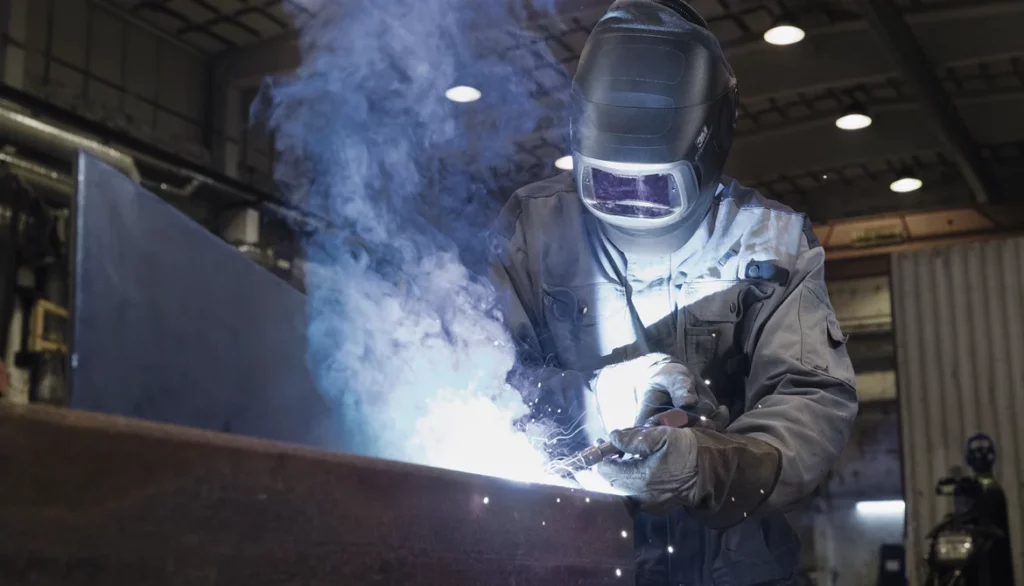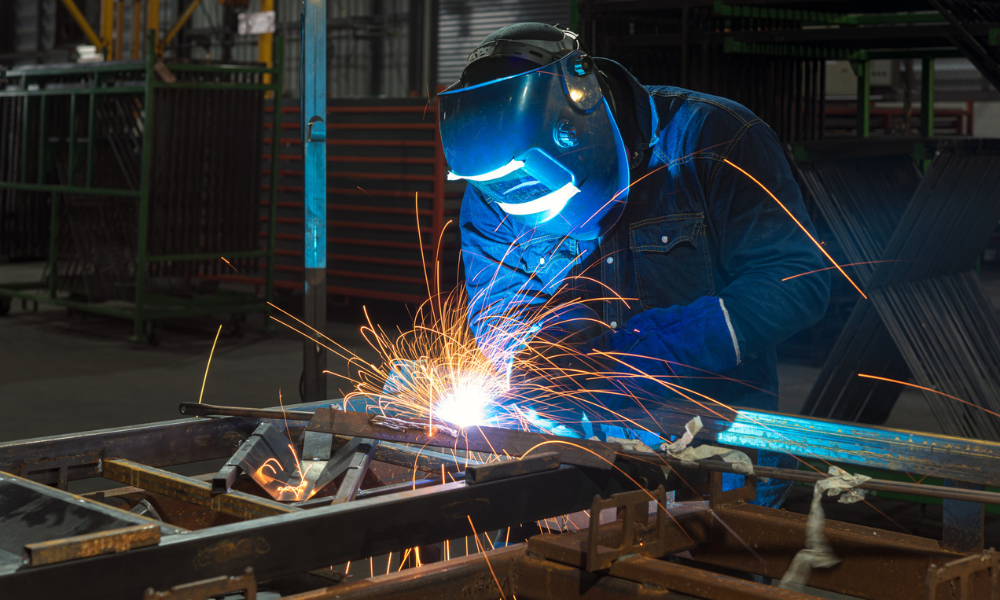Choosing the right lens shade for your welding helmet is essential for comfort, safety, and precision. But with so many options, how do you know which one to pick?
In this article, we’ll provide all the information you need to select the right lens shade based on your welding task, amperage, and personal preferences. We’ll also compare auto-darkening and passive lenses, helping you make the best choice.
With our expert guidance, you’ll feel confident in your decision and be ready to tackle your next project. Plus, we’ll help you with your next step—finding the perfect welding accessories to complement your helmet. Let’s get started!
For a broader understanding of welding helmets, check out our main article, Welding Helmets: Everything You Need to Know.
Understanding Lens Shade Numbers
Lens shades are rated using numbers that correspond to their darkness level. Lower numbers provide clearer visibility for precision tasks, while higher numbers offer enhanced protection for brighter welding processes.
Below is a table summarizing typical shade recommendations for common welding tasks, with notes on exceptions and edge cases for added clarity:
| Welding Process | Amperage Range (A) | Recommended Shade |
| Oxy Fuel Cutting | < 20 A | 5-6 |
| Gas Welding | 20-100 A | 5-8 |
| TIG Welding | 10-200 A | 9-13 |
| MIG/MAG Welding | 80-300 A | 10-14 |
| Plasma Arc Welding | 20-400 A | 10-14 |
For specific applications and further insights, check out Proper Lens Shade in Welding Helmets.
Auto-Darkening vs. Passive Lens Shades
When selecting a welding helmet, you’ll need to choose between auto-darkening and passive lens shades, considering factors like cost differences and typical use-case scenarios:
- Passive lens shades offer a fixed darkness level, making them reliable but less versatile. They’re ideal for consistent welding tasks.
- Auto-darkening lenses adjust to the intensity of the light, providing flexibility for varied jobs. Modern auto-darkening helmets often feature customizable shade ranges and sensitivity settings.
Not sure which type suits your needs? Explore our detailed guide, Auto-Darkening vs. Passive Welding Helmets: Which One Should You Choose?.
Factors to Consider When Choosing Lens Shades

1. Welding Task
Selecting the right shade level optimizes visibility and comfort for each specific welding task. For instance, TIG welding benefits from a darker shade to enhance visibility and comfort with its highly concentrated arc, while gas welding works well with lighter shades for its less intense light.
2. Amperage and Brightness
Higher amperage results in brighter light, making a darker shade ideal for optimal visibility and comfort. Refer to the table above to match your amperage to the correct shade.
3. Comfort and Usability
Features like auto-darkening technology enhance comfort, while lightweight designs reduce fatigue during extended use.
Maintenance Tips for Your Welding Helmet
Proper maintenance ensures your welding helmet delivers consistent and reliable performance for years. Use soft, non-abrasive materials to maintain the clarity and longevity of the lens:
- Regular Cleaning: Use a soft cloth and non-abrasive cleaner to remove dirt and debris.
- Inspect for Damage: Regularly inspect your helmet to ensure it remains in peak working condition and replace components as needed.
- Replace Worn-Out Parts: Replace lenses or headgear components as needed to maintain functionality.
For detailed maintenance tips, revisit our main article, Welding Helmets: Everything You Need to Know.
Where to Buy the Best Welding Helmets and Accessories
Looking for high-quality welding helmets? Browse our extensive product category for options that meet European standards. Complement your purchase with related accessories, including welding goggles and fire-retardant clothing.
Enhancing Safety with Proper PPE
Welding helmets are a cornerstone of PPE for welders, but they should be used alongside other protective gear:
- Welding Goggles: Essential for precision tasks or when a helmet isn’t suitable.
- Welding Gloves: Protect your hands from heat and sparks.
- Fire-retardant Jackets and Work Trousers: Ensure full-body protection from heat and molten metal.
Learn more about choosing the right safety equipment in our guide, How To Choose Safety Glasses – A Buyer’s Guide.
Conclusion
We hope this guide has been helpful in understanding the importance of choosing the right lens shade for your welding helmet. Whether you’re working on TIG, MIG, or oxyfuel welding, selecting the appropriate lens shade can make a significant difference in both safety and performance. We’re here to support you in making the best decision for your needs.
Explore our full range of welding helmets and accessories at Droppe, featuring trusted brands that meet European standards for safety and quality.
If you have any questions or need advice on choosing the perfect helmet, don’t hesitate to reach out. We’re always here to help ensure you work with confidence and safety every time.
– The Droppe Team
Frequently Asked Questions
Auto-darkening helmets adjust to light intensity, while passive helmets have a fixed shade. Auto-darkening provides more flexibility.
Use a soft cloth and non-abrasive cleaner to gently wipe away dirt and debris, ensuring you don’t damage the lens.
Replace the lens if it becomes scratched, cracked, or shows signs of wear to maintain clear vision and safety.
No, always check that your helmet meets EN 379 standards for optical clarity and light transmittance.
Yes, but ensure you adjust the lens shade or choose a versatile auto-darkening helmet to match the specific task.

















